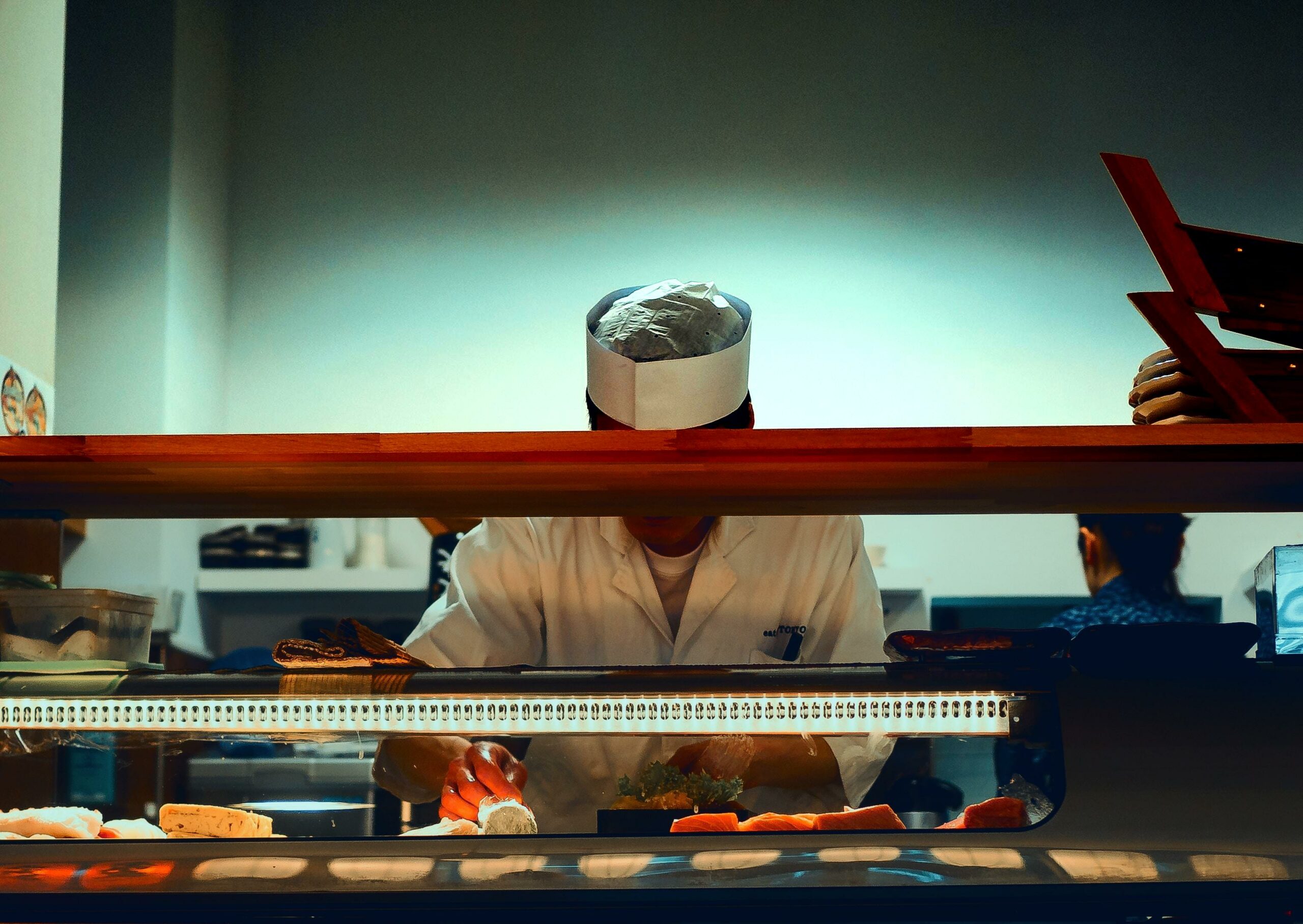Are you ready to embark on a tantalizing journey through the world of sushi? Brace yourself for a captivating exploration of sushi restaurant facts, where we will delve into the rich history, cultural significance, and irresistible varieties of this beloved Japanese cuisine. As an experienced food critic and writer, I have savored the finest sushi delights across the globe, amassing a treasure trove of knowledge on everything sushi-related. From the delicate art of sushi preparation to the fascinating origins of this iconic dish, join me as we unravel the mysteries and indulge in the flavors of sushi restaurants like never before.
Sushi Restaurant Facts
Sushi has become a beloved culinary tradition that has captured the hearts and taste buds of people all over the world. In this article, we will delve into some fascinating sushi restaurant facts that will give you a deeper appreciation for this delectable Japanese delicacy. From its historical roots to the diverse varieties available, there is always something new and exciting to learn about sushi.
The Origins and Cultural Significance of Sushi
Sushi’s story dates back thousands of years, originating in China during the Neolithic period. It eventually made its way to Japan and other Asian cultures, where it became an integral part of their cuisine. The art of sushi preparation was refined and passed down through generations, with the sushi master or “Itamae” undergoing years of rigorous training to perfect their skills.
“Sushi is more than just food; it is a reflection of the culture, history, and seasonal beauty of Japan.”
The Variety of Sushi
When it comes to sushi, there is a wide array of options to choose from. Let’s explore some of the main types you can find in sushi restaurants around the world:
Nigiri Sushi: This classic sushi consists of a hand-pressed mound of sushi rice topped with a slice of fresh fish or seafood. It was invented by the legendary sushi chef Hanaya Yohei during the Edo period.
Maki Sushi: Maki sushi, also known as rolled sushi, is made by wrapping sushi rice and various ingredients in a sheet of seaweed called nori. The roll is then cut into bite-sized pieces.
Chirashizushi: Chirashizushi is a colorful and vibrant sushi variety that features a bed of sushi rice topped with an assortment of sliced raw fish, vegetables, and other toppings.
Inarizushi: Inarizushi is a unique type of sushi where sushi rice is stuffed inside a sweet and savory pouch made of seasoned fried tofu.
Oshi Sushi: Oshi sushi is a regional specialty from Osaka, where layers of sushi rice and various toppings are compressed using a wooden mold before being sliced into bite-sized pieces.
Nare Sushi: Nare sushi is one of the oldest types of sushi in Japan, known for its strong fermented flavors. It is made by fermenting fish with rice, salt, and other ingredients.
“From the elegance of nigiri sushi to the creative rolls in maki sushi, there is a sushi variety to suit every palate.”
Sushi’s Health Benefits and Global Popularity
Sushi’s popularity has spread far beyond Japan’s borders, making it a global culinary sensation. People worldwide appreciate sushi not only for its exquisite flavors but also for its health benefits. Sushi is low in fat, high in protein, and rich in omega-3 fatty acids, which are essential for heart health and brain function.
“Sushi is not just a treat for your taste buds; it is also a nourishing and healthy food choice.”
The Impact of Sushi on the Bluefin Tuna Population
While sushi’s popularity has soared, it has unfortunately had an adverse impact on the bluefin tuna population. The demand for sushi has led to a decline of over 96% in the bluefin tuna population. This alarming statistic highlights the importance of sustainable fishing practices and responsible sourcing in the sushi industry.
“As sushi lovers, it is our responsibility to make informed choices and support sustainable fishing practices to protect the delicate balance of our oceans.”
Authenticity and the Ultimate Sushi Experience
Although sushi can be found in numerous countries, the true essence of authentic sushi lies in Japan. With approximately 45,000 sushi restaurants in Japan compared to 4,000 in the United States, it is clear that Japan remains the ultimate destination for a genuine sushi experience. From the traditional techniques to the seasonal ingredients used, Japan sets the standard for sushi excellence.
“For the most authentic and unforgettable sushi experience, a pilgrimage to Japan is a must for any sushi enthusiast.”
Making the Most of Your Sushi Dining Experience
To truly relish the flavors of sushi, it is important to savor it the right way. When enjoying sushi, remember to:
Skip the dip: Contrary to popular belief, sushi rice itself is not meant to be dipped in soy sauce. Instead, lightly dip the fish or seafood into the soy sauce for a delicate balance of flavors.
Eat it fresh: Sushi is best enjoyed when it is fresh. The flavors and textures are at their peak when the sushi is made with seasonal ingredients and consumed soon after it is prepared.
“By following these tips, you can optimize your sushi dining experience and appreciate the artistry behind each bite.”
Now that you are armed with these intriguing sushi restaurant facts, you can embark on your next sushi adventure with a newfound appreciation for this delectable cuisine. Whether you choose to indulge in the classics or explore the innovative creations of sushi chefs, the world of sushi is a fascinating journey waiting to be savored.
Sushi restaurants are a delightful and fascinating culinary experience. If you are curious about the secrets behind this iconic cuisine, you must explore the incredible facts about sushi restaurants. From the traditional Japanese techniques to the mesmerizing artistry behind every sushi roll, the world of sushi restaurants has so much to offer. Discover the rich history and cultural significance of sushi while indulging in the exquisite flavors and textures that make this cuisine truly exceptional. Immerse yourself in the world of sushi restaurants and unveil the hidden gems that await you. Click here to uncover the captivating facts about sushi restaurants and embark on a remarkable gastronomic journey: facts about sushi restaurants.
FAQ
Q: How many sushi restaurants are there in the United States and Japan?
A: There are approximately 4,000 sushi restaurants in the United States and 45,000 in Japan.
Q: What has caused a decline in the bluefin tuna population?
A: The demand for sushi has caused a decline in the bluefin tuna population, with their numbers decreasing by over 96%.
Q: Should sushi reflect the current season?
A: Yes, traditionally, sushi should reflect the current season, ensuring the use of fresh and seasonal ingredients.
Q: How did an earthquake make sushi more popular in Japan?
A: Sushi became popular in Japan due to an earthquake. The destruction caused by the earthquake in 1923 led to the demand for quick and easy-to-eat foods, and sushi was a perfect fit.
Q: What are the main types of sushi?
A: There are six main types of sushi: Chirashizushi (scattered sushi), Inarizushi (stuffed sushi), Maki sushi (rolled sushi), Nigiri sushi (hand-pressed sushi), Oshi sushi (pressed sushi), and Nare sushi (fermented sushi).
- Medieval Houses: A Social History Through Architecture - April 29, 2025
- Unlock Senior Perks: How Old is a Senior Citizen?Complete Guide - April 29, 2025
- Happy Patients: Tech Solutions for Better Healthcare - April 29, 2025
















